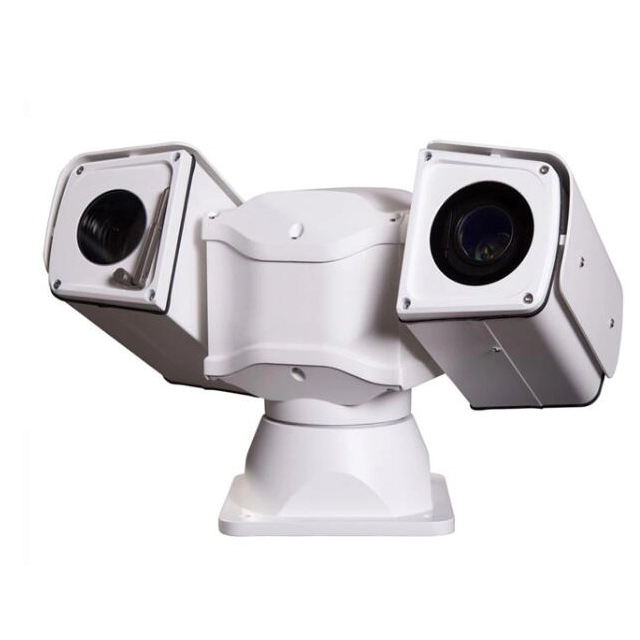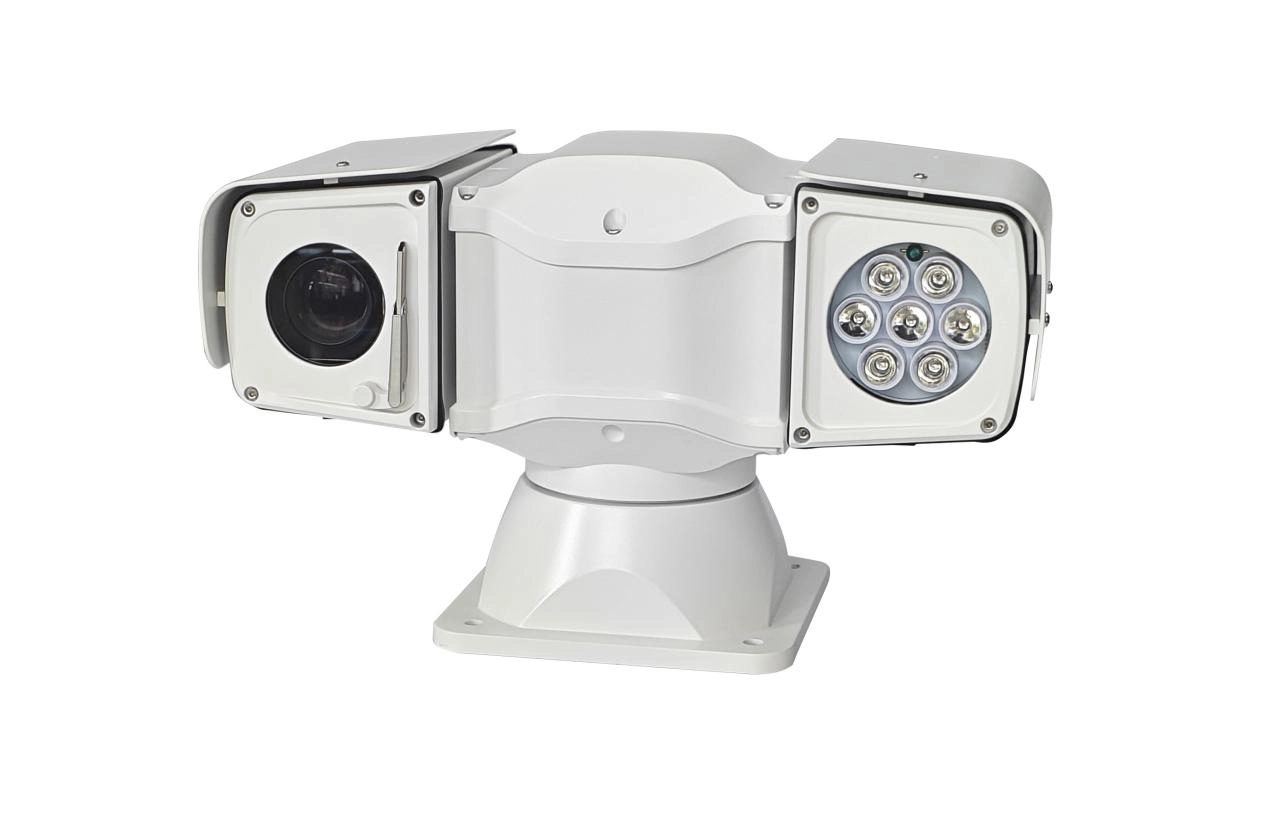Aujourd'hui’ dans le monde, la bonne sécurité compte beaucoup. Et pour vous assurer que vous voyez tout clairement, vous devez choisir la bonne caméra. Deux options courantes sont 1080p et 4K. Mais quelle est meilleure ? Ce blog vous aidera à décider en regardant ce que chaque type peut faire. Shuoxinune entreprise qui fabrique des caméras de haute qualité pour de nombreuses utilisations différentes.
Pourquoi la résolution est importante dans la sécurité
Quand on parle de “ résolution, ” Nous voulons dire à quel point une image est claire. Une caméra 1080p affiche des images à 1920 par 1080 pixels. Cela signifie qu'environ deux millions de minuscules points composent chaque image. Une caméra 4K montre bien plus. Il a 3840 x 2160 pixels, ce qui représente plus de huit millions de points. Cela signifie qu'une caméra 4K peut montrer beaucoup plus de détails.
Avec plus de détails, il devient plus facile de voir des choses comme des visages ou des plaques d’immatriculation. Cela aide les gens à découvrir ce qui s’est réellement passé pendant un événement. Dans de nombreux cas, avoir une vidéo claire signifie résoudre les problèmes plus rapidement.
Considérations de performance pour les applications professionnelles
Adapter la résolution aux besoins opérationnels
Lors du choix des caméras de surveillance, la résolution doit être soigneusement adaptée aux exigences spécifiques de surveillance. Alors que les caméras 4K offrent une clarté d'image exceptionnelle, les solutions professionnelles 1080p s'avèrent souvent plus adaptées aux applications exigeantes. Par exemple, Shuoxin’ s Caméras PTZ de la série WL démontrer comment les systèmes 1080p optimisés peuvent surpasser les options de résolution supérieure dans la surveillance des infrastructures critiques.

Ingénierie pour des environnements difficiles
La série WL combine une construction robuste avec des capacités optiques avancées pour la surveillance extérieure. Son boîtier en alliage d'aluminium haute résistance résiste aux intempéries extrêmes tout en maintenant un contrôle précis du mouvement, avec une panne continue à 360 ° et des plages d'inclinaison de -70 ° à 35°. Avec protection IP66 et climatisation intégrée, ces caméras fonctionnent de manière fiable de -35°C à 55°C, offrant des options de vision nocturne flexibles, y compris des configurations infrarouge (100-120 m), lumière blanche (80 m) ou laser à longue distance (jusqu'à 1000 m).
Avantages dans les applications de surveillance du trafic
Essentiaux de performance en temps réel
Pour la surveillance de la circulation, la série WL’ La résolution 1080p offre des avantages distincts. L'interface HD-SDI assure une transmission vidéo à latence zéro essentielle pour le suivi des véhicules en mouvement rapide, tandis que le support multi-protocole maintient la compatibilité avec l'infrastructure existante. Des fonctionnalités avancées telles que 256 préréglages programmables et six modèles de patrouille permettent une couverture complète sans avoir besoin de plusieurs caméras.
Avantages de l'efficacité du système
Le format 1080p offre des avantages importants à l'échelle du système dans les déploiements professionnels. La réduction de la bande passante et des exigences de stockage permet une évolution plus rentable tout en conservant suffisamment de détails pour la reconnaissance des plaques d'immatriculation. Cet équilibre entre performance et pratique rend les solutions professionnelles 1080p idéales pour les réseaux de transport, où la fiabilité et l'efficacité opérationnelle sont souvent supérieures aux besoins de résolution maximale.
Optimisation de la bande passante et du stockage
Une seule caméra 4K peut consommer 15-20Mbps de bande passante par rapport à 4-6Mbps pour 1080p. La série WL’ La compression H.265 réduit encore cela à 2-3Mbps tout en maintenant la qualité de l'image. Pour un centre de surveillance du trafic de 100 caméras, cela signifie 1,5 Gbps par rapport à une bande passante totale de 300 Mbps – une différence de cinq fois dans les besoins en infrastructures.
Les exigences de stockage présentent des disparités similaires. Les systèmes 4K ont besoin de 3 à 4 To par caméra par mois contre 0,5 à 1 To pour 1080p. La série WL’ L'enregistrement intelligent (activé par le mouvement, déclenché par l'événement) peut réduire encore plus cela, rendant la rétention vidéo à long terme pratique pour l'analyse des incidents de circulation.

Penser au coût
Ce n’est pas seulement l’appareil photo qui coûte de l’argent. Pour utiliser une caméra 4K, vous devrez peut-être acheter des disques durs plus grands. Vous pourriez également avoir besoin d'une configuration Internet plus rapide ou d'une alimentation plus forte. Ces choses peuvent s'ajouter.
Les caméras 1080p coûtent moinsIls fonctionnent également bien dans de nombreux petits ou simples emplois. Si vous regardez un petit magasin ou une maison, une caméra 1080p pourrait être tout ce dont vous avez besoin.
Mais si vous surveillez une centrale électrique ou un aéroport, vous pourriez avoir besoin de plus de détails. C’est alors que dépenser plus d’argent sur la 4K a du sens. À long terme, cela pourrait même vous faire économiser de l’argent en donnant de meilleurs résultats.
1080p vs 4K : un aperçu rapide
| Fonctionnalité | 1080p | 4K |
| Résolution | 1920x1080 | 3840 x 2160 |
| Nombre de pixels | Environ 2 millions | Plus de 8 millions |
| Voir la zone | Moyen | Large |
| Zoom Clarité | Faible | Haut |
| Besoins de stockage | Faible | Haut |
| Charge réseau | Faible | Haut |
| Prix | inférieure | Plus haut |
| Meilleur pour | Maisons, magasins | Aéroports, usines |
Ce tableau montre pourquoi les deux types sont utiles. Tout dépend de ce dont vous avez besoin.
Pensées finales
Bien que la résolution 1080p reste un choix fiable pour de nombreuses applications, il est essentiel d'adapter votre système de surveillance à l'avenir. Au fur et à mesure que l’analyse basée sur l’IA et les applications de villes intelligentes se développent, les caméras 4K peuvent devenir nécessaires pour la reconnaissance avancée des objets et l’analyse comportementale. Cependant, pour les environnements où la réponse en temps réel et la stabilité du système sont primordiales, comme la gestion du trafic ou la sécurité du périmètre, Shuoxin’ Les solutions 1080p offrent une approche équilibrée, assurant des performances élevées sans demandes excessives de bande passante ou de stockage.
Cet équilibre stratégique fait de la 1080p un choix durable pour la surveillance professionnelle, même à mesure que la technologie évolue.
En fin de compte, la 1080p et la 4K ont leurs bons points. 1080p est idéal pour économiser de l'argent et donne toujours de bonnes images. La 4K est meilleure si vous avez besoin de clarté et de couverture de haut niveau.
Shuoxin fabrique des caméras de haute qualité pour toutes sortes de besoins. Leurs produits fonctionnent dans des endroits difficiles - chaud ou froid, jour ou nuit. Ils ont passé des tests rigoureux et répondent aux normes de sécurité telles que CE et FCC.
Si vous voulez améliorer votre système de sécurité, réfléchissez à ce dont vous avez vraiment besoin. Peut-être commencer par un mélange de 1080p et 4K. Testez-le dans une zone avant de l'utiliser partout.
Shuoxin peut vous aider à trouver la bonne configurationIls ont des années d'expérience et de nombreuses options de caméra intelligente. Avec leur aide, votre sécurité peut être à la fois intelligente et forte.
FAQ
Q1: Ai-je vraiment besoin de caméras 4K pour la sécurité?
R : En fait, ce n’est pas nécessairement le cas. Cela dépend d'une situation. Alors que la 4K offre des images plus nettes, la 1080p est parfaitement bonne pour la plupart des maisons ou des petites entreprises. Par exemple, Shuoxin’ Les caméras 1080p avec zoom et détection intelligente fonctionnent bien pour la surveillance quotidienne. Vous n'avez besoin que de 4K si vous avez besoin de détails extrêmes (comme la lecture de plaques d'immatriculation de loin).
Q2 : Peut-être peut Je mélange des caméras 1080p et 4K dans le même système?
R : Oui ! Les systèmes de sécurité modernes prennent en charge les deux résolutions. Les caméras Shuoxin suivent des protocoles standard, ils fonctionnent donc avec la plupart des enregistreurs. Assurez-vous simplement que votre enregistreur peut gérer différentes résolutions, vous permettant d'utiliser 4K pour les zones clés et 1080p pour la couverture générale, économisant de l'argent sans sacrifier la sécurité.
Q3 : Le 4K utilise-t-il plus d’espace de stockage ?
Oui, beaucoup plus :
- 4K : ~15-20 Go par heure
- 1080p : ~4–6 Go par heure
Cependant, les nouvelles technologies de compression comme H.265 (utilisées dans les caméras Shuoxin) peuvent réduire la taille des fichiers de moitié sans perdre la qualité. Cela permet de gérer les coûts de stockage tout en conservant des images à haute résolution.

